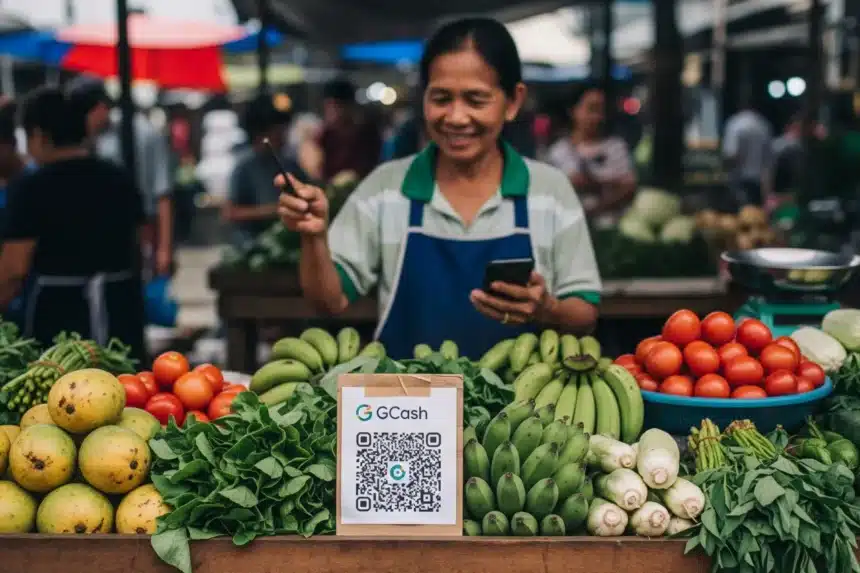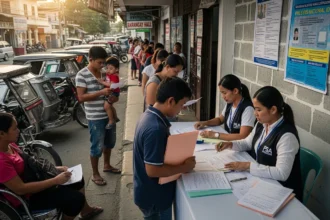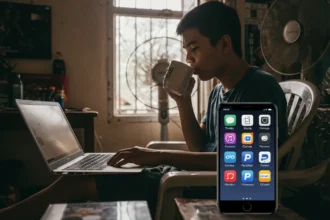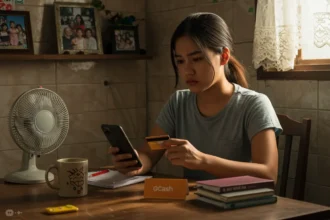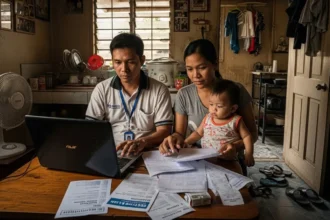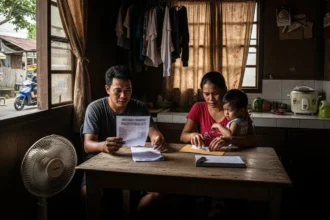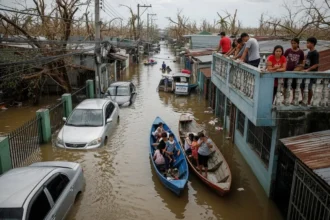If you asked a Filipino ten years ago how they paid for groceries, bills, or even borrowed money, the answer would almost always involve cash. Crumpled bills in wallets, coins jangling in pockets, and long lines at Bayad Center or Western Union were part of everyday life. Fast forward to 2025, and the landscape looks completely different. With just a few taps on a phone, Filipinos are now moving money faster than ever – thanks to GCash, the e-wallet that has become as familiar as Jollibee and jeepneys.
- 🌍 Financial Inclusion: From Unbanked to Empowered
- 📲 Everyday Transactions Made Simple
- 🛒 The QR Code Revolution
- 📦 Online Shopping & Digital Lifestyle
- 📊 Table: How GCash Changed Pinoy Money Habits
- 🕵 Espionage Concerns and Data Security
- ✅ The Benefits of GCash
- ❌ The Risks and Downsides of GCash
- 🌏 Global Context: How PH Compares
- 💡 Frequently Asked Questions (FAQ)
- Beyond an App: A Cultural Shift in Money 💡
- 📲 References
For many Pinoys, GCash isn’t just an app; it’s become a lifeline. From students splitting a barkada pizza bill, to sari-sari store owners accepting QR codes, to OFWs sending remittances home instantly – the way Filipinos handle money has undergone a massive shift. But like any revolution, it comes with both opportunities and risks.
This feature takes a closer look at how GCash has changed Pinoy money habits, what it means for our financial culture, and where it might take us in the years ahead.
🌍 Financial Inclusion: From Unbanked to Empowered
Before GCash, millions of Filipinos had no access to banks. Opening an account required multiple IDs, maintaining a balance, and often a trip to the city. For rural communities, this was a barrier. GCash bridged the gap by allowing anyone with a smartphone and SIM card to store, send, and receive money.
- Farmers in Nueva Ecija now receive payments straight to their e-wallets.
- Tricycle drivers in Bacolod accept QR payments from students.
- OFWs no longer rely solely on remittance centers, saving both time and fees.
This shift gave previously unbanked Filipinos a chance to participate in the financial system. For the first time, many could save digitally and access services like insurance, credit, and investments – all inside one app.
📲 Everyday Transactions Made Simple
GCash redefined how we do small, daily money tasks. Bills payment, load purchases, and even government transactions became available without leaving the house.
Take for example a mother in Cavite who used to spend two hours lining up to pay the Meralco bill. Now, she settles it in under a minute – while cooking lunch. Or a student in Davao who no longer has to beg his kuya for mobile load because he can now buy it directly on GCash with his allowance.
It’s not just about convenience – it’s about time saved, frustration avoided, and opportunities gained.
🛒 The QR Code Revolution
The rise of QR codes changed the way Filipinos shop and sell. From mall boutiques to palengke stalls, QR payments are becoming the norm. Small vendors who once dealt only with coins now scan payments directly from smartphones.
- Carinderias in Baguio have GCash QR codes taped on their tables.
- Ukay-ukay shops in Mindanao accept digital payments, allowing even students to pay without cash.
- Church collections during mass now sometimes include QR codes flashed on screens.
This innovation blurred the line between traditional commerce and modern fintech, empowering even the smallest enterprises to go digital.
📦 Online Shopping & Digital Lifestyle
The boom of Lazada, Shopee, and TikTok Shop collided perfectly with GCash’s rise. Suddenly, people could shop for anything – from shoes to groceries – without needing a credit card. GCash filled the gap for millions who didn’t have plastic but wanted to join the e-commerce wave.
In fact, many sellers now prefer GCash over COD (cash on delivery) because payments are faster and safer. For buyers, it also reduced the awkwardness of scrambling for change at delivery.
📊 Table: How GCash Changed Pinoy Money Habits
| Habit Before GCash | Habit After GCash |
|---|---|
| Long lines at remittance centers | Instant OFW remittances via app |
| Cash-only sari-sari stores | QR code payments accepted |
| Bills paid at Bayad Centers | Bills settled in-app in seconds |
| Borrowing from 5-6 lenders | Microloans available digitally |
| Saving in alkansya jars | Digital savings wallets in-app |
🕵 Espionage Concerns and Data Security
With GCash’s success came questions about privacy. Where does the data go? How secure are transactions? Could cybercriminals exploit the system?
Experts assure users that GCash employs encryption and complies with Bangko Sentral ng Pilipinas (BSP) standards. Still, the sheer dominance of one e-wallet raises eyebrows. If millions rely on it daily, what happens if the system crashes – or worse, if it’s hacked?
In 2023, glitches that temporarily froze accounts caused panic on social media, reminding Filipinos that while digital finance is powerful, it’s not foolproof.
✅ The Benefits of GCash
1. Financial Inclusion for the Unbanked For millions of Filipinos, opening a traditional bank account is hindered by a lack of required documents, high initial deposit amounts, and the sheer inaccessibility of physical branches. GCash effectively bypasses these barriers. With just a valid ID and a smartphone, anyone can create an account, giving them access to essential financial services. This is a monumental step towards financial inclusion, providing a secure way for a large, previously unbanked population to save money, receive remittances, and participate in the digital economy.
2. Faster Transactions and Significant Time Savings The convenience offered by GCash translates directly into time saved. Instead of spending hours commuting and waiting in long lines to pay utility bills, transfer money at a remittance center, or deposit cash at a bank, users can complete these transactions in seconds from their phones. This efficiency is transformative, freeing up valuable time for more productive or personal activities and removing much of the daily friction associated with managing personal finances.
3. A Powerful Boost to Small Businesses via QR Payments GCash has been a game-changer for Micro, Small, and Medium Enterprises (MSMEs), from the local sari-sari store to the weekend market vendor. The GCash QR code provides a low-cost, easy-to-implement way to accept cashless payments without the need for expensive card terminals. This not only enhances customer convenience but also improves a business’s security by reducing the amount of physical cash on hand. Furthermore, it simplifies record-keeping and ensures that even the smallest businesses can cater to the growing number of consumers who prefer digital payments.
4. Democratic Access to Credit, Savings, and Investments Beyond being a simple wallet, GCash has become a gateway to a suite of financial products that were once exclusive to the banked and wealthy. Through features like GSave, users can open a high-interest savings account with no minimum balance. GInvest allows individuals to invest in mutual funds for as little as ₱50, demystifying the world of investing. Services like GCredit and GLoan use an alternative credit scoring system (GScore) to offer loans to individuals who may not qualify for traditional bank credit, opening up crucial financial opportunities.
5. Convenient and Seamless Integration with the Digital Lifestyle GCash is deeply embedded in the modern Filipino’s digital life. It integrates seamlessly with a vast ecosystem of online shopping platforms (like Lazada and Shopee), food delivery services, ride-hailing apps, and entertainment subscriptions. This frictionless payment experience makes online transactions effortless and is a key driver of its “super app” status, positioning it as the central hub for a wide range of daily digital activities.
❌ The Risks and Downsides of GCash
1. Over-reliance on a Single Platform for All Financial Needs While the convenience of having everything in one app is a major benefit, it also creates a significant risk. When users concentrate their savings, payments, credit, and investments into a single platform, they create a single point of failure. If a user’s GCash account is compromised or becomes inaccessible for any reason, their entire financial life can be thrown into disarray. This over-reliance can be dangerous if no alternative payment or banking methods are readily available.
2. Data Privacy and Cybersecurity Concerns As GCash’s user base has grown, so has its appeal to scammers and hackers. The platform is a constant target for sophisticated phishing scams, account takeovers, and other fraudulent activities. While GCash implements security measures, the ultimate responsibility often falls on the user to be vigilant. Furthermore, the vast amount of personal and financial data collected by the app raises legitimate data privacy concerns, especially in the event of a data breach, which could expose sensitive information to malicious actors.
3. Vulnerability During System Outages or Glitches No technology is perfect, and GCash is susceptible to system maintenance, unexpected outages, and technical glitches. During these periods, users can be temporarily locked out of their accounts, unable to access their own money. This can be a minor inconvenience if it happens in the middle of the night, but it can be a major crisis if it occurs during an emergency or when a user is trying to pay for essential goods and services, highlighting the fragility of a purely digital financial system.
4. Impulse Spending Fueled by Easy, Frictionless Transactions The same seamless convenience that makes GCash so attractive can also be a financial pitfall. The psychological effect of simply scanning a QR code or tapping a button to pay can feel less “real” than handing over physical cash. This frictionless nature of digital payments can make it easier for users to spend money impulsively without fully considering the cost, potentially leading to poor budgeting and overspending.
5. Absolute Dependence on Stable Internet Connectivity The functionality of GCash is entirely dependent on two things: a charged smartphone and a stable internet or data connection. In a country where internet connectivity can be unreliable, especially in rural or remote areas, this is a significant limitation. During power outages, natural disasters, or in areas with poor cellular signal, the app becomes completely unusable, rendering a user’s digital funds inaccessible when they might be needed most.
🌏 Global Context: How PH Compares
In China, WeChat Pay and Alipay dominate daily life, while in Kenya, M-Pesa serves as a financial backbone. The Philippines, through GCash, has carved its own model of digital adoption – unique because it blends low-income users with tech-savvy millennials.
This balance has made the country one of Southeast Asia’s fastest-growing digital finance markets.
💡 Frequently Asked Questions (FAQ)
Is GCash safe to use?
Yes, GCash follows BSP regulations and uses encryption. However, users must also practice caution – avoid phishing links, secure your PIN, and don’t share OTPs.
Can I use GCash abroad?
Yes, Filipinos in selected countries can use GCash for remittances and payments, but functionality varies by location.
What if my account gets hacked?
Immediately report to GCash support and file a dispute. BSP regulations require providers to investigate and protect consumer funds.
Does GCash charge fees?
Basic services like cash-in via linked bank accounts are free, but certain transfers and withdrawals may include small fees.
Can kids or minors use GCash?
Yes, with parental consent. GCash Jr. was introduced to help teenagers learn money management.
What happens if GCash crashes nationwide?
Transactions would temporarily halt, underscoring the need to keep alternative options like cash or bank transfers ready.
How does GCash earn money?
Through transaction fees, merchant partnerships, microloans, and financial services embedded in the app.
Is GCash replacing banks?
Not exactly. It complements banks by making financial services more accessible, but banks remain essential for larger savings and investments.
Beyond an App: A Cultural Shift in Money 💡
GCash didn’t just digitize payments – it reshaped Filipino money culture. Conversations about money are now faster, more transparent, and less tied to physical bills. For some, it’s empowerment: no need to wait in long queues or rely on middlemen. For others, it’s a warning sign: over-dependence on one system makes us vulnerable.
Whether you’re a farmer in Isabela, a student in Cebu, or an OFW in Dubai, GCash has become part of the Pinoy way of life. The challenge now is to balance the convenience of fintech with the caution of traditional savings habits.
Because in the end, the app isn’t just about money transfers – it’s about how Filipinos, for the first time in history, are experiencing financial inclusion at scale. The question moving forward: Will we use it to build lasting financial habits, or let the convenience lead us into overspending?
📲 References
-
Nikkei Asia – Filipinos Prefer E-wallets to Banks as Entry Point
-
AsiaNikkei/Philstar – Over 94M GCash Users, 90% Come From Lower-Income Sectors
-
FintechNews PH – 5 Top E-Wallets in the Philippines 2025
-
Mynt/GCash – Accelerating Inclusion: How GCash is Leveling the Playing Field



